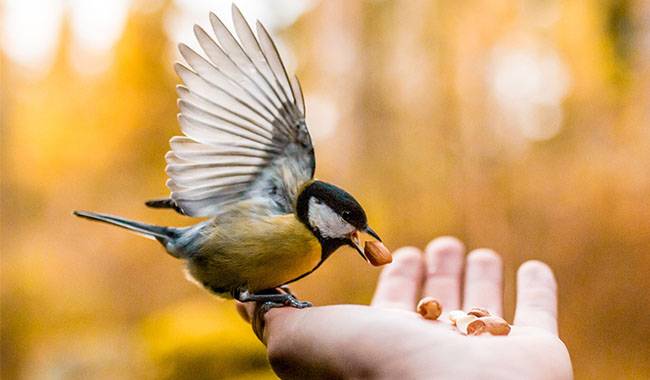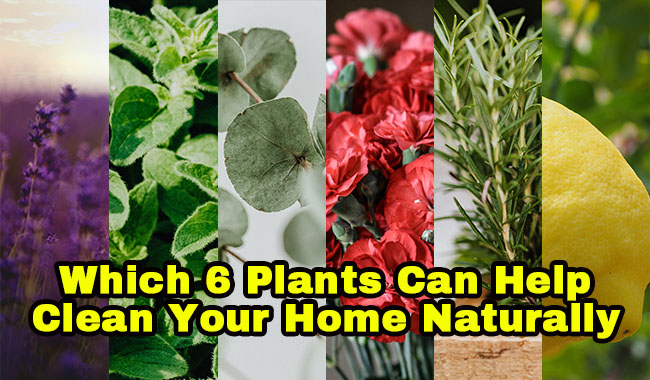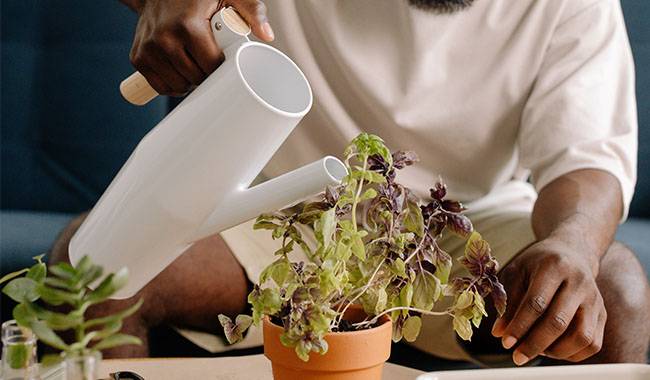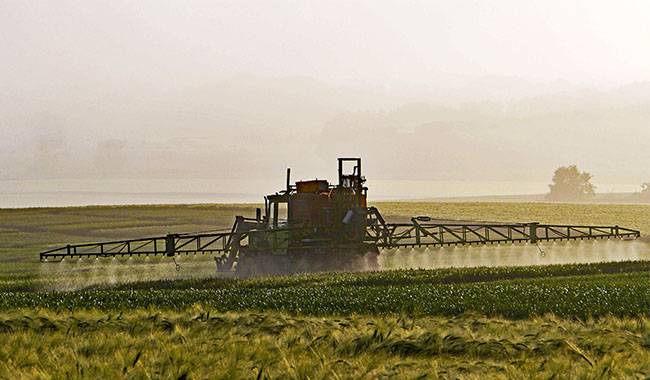
WHEN SHOULD I FERTILIZE MY GARDEN IN AUTUMN?
It is best to apply fertilizer early in the fall, before the ground freezes. Fertilizer is usually applied until the third decade of December, after which no soil fertilization is done. After applying any fertilizer, it is best to make a mulch about 1 inch thick with compost. The compost and roots will protect the ground, which is not yet covered with snow, from frost when the frost comes, and in the spring, as the snow melts, it will become additional nutrients.
Don’t forget that fall is the best time for most plants to enrich the soil with nutrients by spring, plants will begin to grow and consume the nutrients their caring owners have already put down in the soil.
ARE PESTICIDES THAT SCARY?
Some gardeners and vegetable growers take such “risks” because the various pesticides make their lives easier: they kill weeds, treat diseases, and destroy pests, and people just sit back and wait for the harvest.
But others, knowing that pesticides are additional chemicals that have permeated our food, our air, and our clothes and shoes, often refuse to use them at all. But is this correct?
We can answer this with certainty: If we look at the doses and timing of pesticide use, they do no more damage than adding ordinary household soap to potato sauce, in the hope of getting rid of potato beetles.
WHAT ARE PESTICIDES?
A pesticide is a substance used to control pests. Generally speaking, a pesticide is a chemical (such as a carbamate) or biological agent (such as a virus, bacteria, or fungus) that deters, incapacitates, kills, or otherwise stops a pest.
In other words, it is clear that such products are chemical products designed to kill very real pathogens and fungal infections, pests, weeds, etc. Typically, the category of pesticides also includes Roundup, but we’re getting a little ahead of ourselves, so let’s talk about the classification of pesticides.
Classification of pesticides
It is customary to classify all pesticides into groups based on their action. This is simple, anything that kills a pesticide belongs to that group. There are quite a few of these groups, as many as ten. The term pesticide includes all of the following: herbicides, insecticides (which can include insect growth regulators, termiticides, etc.) nematicides, molluscicides, piscicides, bird killers, rodenticides, fungicides, insect repellents, animal repellents, anti-microbials, and fungicides, etc.
The first category of pesticides includes the herbicides that we are all familiar with and that we all use at least once in our lives.
The second category is algaecides – they are used to control algae and are often used to clean algae in swimming pools, artificial reservoirs, and similar water facilities. Typically, algaecides only work on algae.
Defoliants – Pesticides used to remove leaves, they are often used in nurseries, for example, to treat plants with defoliants before digging up young plants, instead of tearing off the leaves by hand, the leaves fall off by themselves without causing any damage to the plants.
Another type of pesticide is defoliant (root-flower), and these chemicals are used to remove flowers. In the garden, wilting is usually rationed in this way. First, the purpose of this measure is to level out the fruiting cycle by regulating the number of flowers, with the side effect of increasing the weight of the fruit and sometimes – and improving its taste.
Next, the other most common group of pesticides known to us all are fungicides. They are designed to combat any fungal infections on plants.
Fungicides are pesticides that fight harmful bacteria.
Pesticides are another group that is familiar to all of us; they are pesticides that kill insect pests.
Acaricides are a group of chemicals that can be used to effectively control mites. These are not only spider mites but also those that live in the forest.
Rodenticides are pesticides that can be used to combat rodents more effectively.
Finally, a very rare group that few people have heard of is avicides. these are pesticides that will kill birds (yes, there are some).
As you can see, there are many groups of pesticides and it is not necessary to review them all now, but we will tell you more about them later on the site.
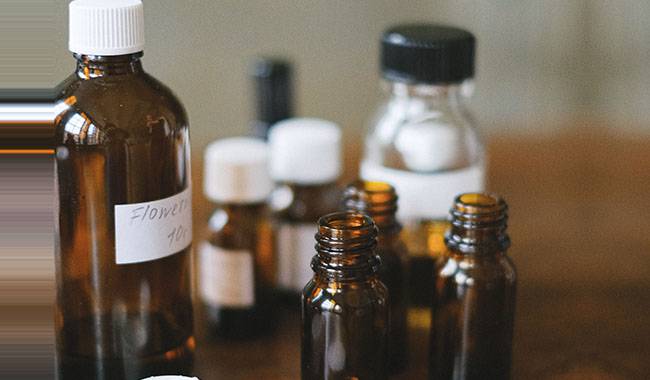
PESTICIDE APPLICATION ERRORS
Incorrect use of pesticides
In general, we can say that the first mistake of gardeners and vegetable growers is related to the fact that some people confuse the groups of pesticides or use them completely wrong, so it is necessary to know.
Incorrect use of herbicides
So, herbicides, as we described above – with their help you can literally kill weeds and do not need to wield a hoe all summer to keep the soil clean. However, it is not so simple, because many people do not know that herbicides also have a sector and are quite important.
Therefore, the first group includes herbicides for soil disinfection, i.e. plots treated with these herbicides (in general) will not grow again. Usually, such herbicides must include sodium chloride and borax.
The second type of herbicide is the one most popular with gardeners and vegetable growers. It consists of agents that selectively kill plants, i.e. the cultivated plants remain and the weeds die. These herbicides necessarily include 2,4-dichlorophenoxyacetic acid (2,4-D), which at all times copes with dicotyledonous weeds and kills American maple, however, said cultural grains are not touched.
The third category is the herbicide, which, as in the case of the first, kills all organisms, but the soil is not sterilized. This method is convenient to use, for example, from the fall on soils planned for sowing or planting in the spring. Few people know that the first herbicide that belongs to this category is the mediocre kerosene.
The fourth category is herbicides, which can kill any plant, but only by staining it. Say, when growing cultivated tomato plants, it is easy to kill self-seeding flowers or dill, if necessary, well, and so on. The action of these herbicides is to move down from where the vascular system is in contact, reaching the roots and inhibiting their uptake of water or (and) nutrients.
So, here we can first say that when a gardener or gardener, without reading the few lines on the package about the effect of the herbicide, pours it all out and then wonders why his plot, together with the American maple, wilts, and honeysuckle, or why after the application of the herbicide in his garden, does not grow at all ……
Incorrect use of fungicides
The next group of pesticides that I want to cover in detail is fungicides. Applying them, gardeners and vegetable growers can also make mistakes. We should know that the vast majority of fungicides are inorganic substances, containing elements such as sulfur, copper, and even mercury. Initially, the first fungicide was sulfur in its purest form. For a long time, it was used successfully against all crops in which powdery mildew appeared, and this infection appeared in all crops.
Of course, there were fungicides and fungicides based on organic compounds, such as formaldehyde. Currently, the market is simply flooded with fungicides that are considered synthetic organics, such as dithiocarbamates. You can use and fungicides that are based on antibiotics such as streptomycin, which we all know, but these fungicides are better suited to combat bacterial rather than fungal infections.
When buying this or that fungicide, you should read the instructions on the package very carefully, because for example there are fungicides with systemic action, which do not treat powdery mildew on the surface of the leaves, but moving around the plant can treat its internal infections. There are also contact-acting ones, on the contrary, which cannot penetrate deep into the plant but will treat all manifestations of fungal infections on the plant surface. Here is another mistake – improper use of fungicides. Finally, they must be used according to the weather conditions. For example, it does not make sense to use a contact fungicide in wet weather, but a systemic fungicide may have time to penetrate into the plant and cure it.
Use of banned pesticides
From mistakes related to inattention, we move to more serious mistakes related to lack of knowledge. Perhaps the most common mistake is the use of a pesticide that has been banned. In fact, it’s easy to find out whether a pesticide is banned or permitted-just look in the U.S. EPA on pesticides. This list is publicly available and can be downloaded from the Internet. It not only shows the pesticides that are approved for use during the current growing season but also provides brief information about these pesticides and even their uses.
Readers may ask why these or those pesticides are suddenly banned. Usually, the main reason for adding a pesticide to a blacklist is that it is highly stable in plants. Simply put – you apply a pesticide, but its ingredients remain in the soil, leaflets, shoots, fruits, and berries, and they are bound to enter our organisms.
There are other reasons as well – for example, the increased toxicity of the drug or some negative consequence of its use. For example, in the days of the cloudless Soviet Union, dust – DDT was widely used, then it was found to actively accumulate, literally everywhere, and then it was banned everywhere.
Choosing a pesticide by brand name rather than by active ingredient
This mistake may only affect your wallet. As market relations developed, a plethora of companies emerged that stamped various pesticides by simply reprinting the name and changing the packaging. Naturally, there is widespread advertising that their pesticides are the best.
Therefore, in order not to make the mistake, and not to spend $1000 on the same thing for $100, always look at the packaging, which should always state the active ingredients of the drug. Well, let’s say “Arrivo” and so on for the same.
Do not observe the dosage of pesticides
As with irrigation and fertilizers, the dosage of pesticides must be respected, pesticides are not oil and plants are not mud, you can spoil any living thing with them and harm the environment. Therefore, when buying pesticides, it is still important to read carefully the composition, which necessarily indicates the percentage of active substances, on the basis of which the dosage is easy to calculate.
For my own part, I can say that if you have the option of taking pesticides in ampoules or sealed jars, it is better to take the second one. One can remove the pesticide from the jar, use the prescribed dose, and keep the remainder in a safe place, out of reach of children, for several months until the season is over. In the case of ampoules, the residue of the drug must be thrown away. Often, gardeners or horticulturists regret the contents and they either dispose of all the residue continuously or increase the dose – here trouble may arise.
Use the same pesticide or acaricide every year
It is not a question of whether it is allowed or forbidden, but in the pest’s banal habit to poisons and its survival in these conditions. I have seen many complaints on the Internet about the immortality of potato beetles, whiteflies, and aphids. Most likely, for various reasons, the gardener or vegetable grower uses the same pesticide year after year, and the pests on his plot are simply accustomed to it and do not die. To avoid such surprises, it is necessary to change pesticides and acaricides every year, preferably during each treatment of the current season, due to the large choice.
Long-term storage of pesticides
Another mistake, often due to mediocre economics, can also be due to ignorance. A gardener or vegetable grower buys a lot of pesticides at once at the end of the season, when various pesticides start selling “from five packs”, stores them in a place inaccessible to children, and then uses them. Not only that, but the pests get used to it, so remain in the composition is destroyed, and over time, very active substances, so that the pesticides insignificantly stop acting (in the country only one winter, 12-15% of the active substances escape).
Sometimes it also happens that these substances change their structure and even become dangerous to the plant, sometimes causing severe burns. To avoid making this mistake, do not buy large quantities of pesticides (for the rest of your life), take only the amount needed for the current season, and, again, read the packaging – where the expiration date must be specified – no one can safely buy “stale” pesticides.
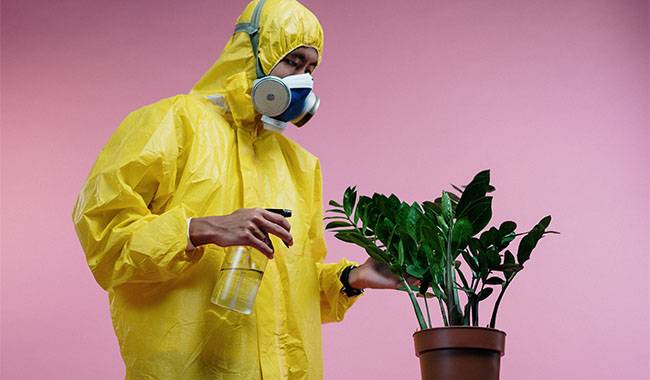
Storage of pesticide working solutions
Another mistake comes from the previous one – storing a pesticide’s working solution between treatments (i.e., when you dilute the pesticide too much and leave it in the bottle until the next application). Besides the fact that the working solution may lose most or all of its properties, it is also dangerous.
In a room, it can poison the air you and your family members breathe, and there are often real accidents where someone unknowingly drinks the pesticide from a nice bottle. The only advice is to dilute as much of the solution as you need now, and it’s best to pour out the rest, but don’t store it.
Mixing pesticides
Another mistake is to mix different pesticides and use them to treat plants. Here, it is difficult to even predict what might be, in the best case scenario – they will not work.
Some may ask, why do this? It turns out that many people do, for example, when aphids and powdery mildew attack roses, they take and mix pesticides with fungicides, and if spider mites are also entangled, then add acaricides to the “dynamite”. The “mixture”. The result could be anything from burnt leaves to dead plants. It is not worthwhile to conduct such an experiment, but it is possible to carry out three treatments at intervals of one day, or at least every 10-12 hours, regardless of dubious time economies.
Failure to comply with the treatment plan
Failure to adhere to the timing of treatment is another mistake. If you treat the plant lightly from the butterfly, it doesn’t matter, by this time it’s done for the summer and it has produced its ovaries. If it is handled so late that the preparation does not have time to break down and remains on the surface of the berries or fruits, or even accumulates inside them, that is a completely different matter.
Keep in mind that the vast majority of medications, such as fungicides, pesticides, and acaricides can be applied at least 20 days before harvest, and no later. In the future, it is better to use folk remedies, the effect is certainly not the same, but there is no harm. Detailed treatment provisions are given in the directive.
The use of pesticides harmful to the environment
Finally, it is a mistake to use pesticides independently of the environment. In other words, the gardener or gardener does not always take into account the environment – for example, beneficial insects such as bees or the inhabitants of the nearest water body.
You should have a firm grasp that you can only use pesticides strictly according to the instructions on the package, which must also state whether the pesticide is dangerous to fish or beneficial insects and, if so, to ensure that it does not harm them. The simplest measure can be to treat at night in completely windless weather.
There are, in fact, episodes of all the wrong pesticides, but if you, our dear readers, know of others, then write in the comments, I think it would be all the more useful.
More related information about Plant Diseases




